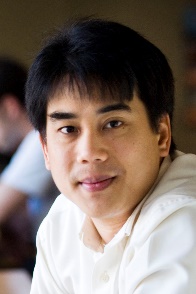Acoustic Enhancement of Intracellular Delivery for Ex Vivo Therapeutics
SEMINAR
Biomaterials and Tissue Engineering Research Center, Shanghai Institute of Ceramics, Chinese Academy of Sciences
中国科学院上海硅酸盐研究所生物材料与组织工程研究中心
Acoustic Enhancement of Intracellular Delivery for
Ex Vivo Therapeutics
报告人:Prof. Leslie Yeo
(Royal Melbourne Institute of Technology, Australia)
报告时间:2018年12月24日(星期一)上午10:00
报告地点:4号楼14楼第一会议室
联系人:常江(52412804)
欢迎广大科研人员和研究生参加!
 Personal information:
Personal information:
Leslie Yeo is a Professor of Chemical Engineering at RMIT University, Australia. He received his PhD from Imperial College London in 2002, for which he was awarded the Dudley Newitt prize for a computational/theoretical thesis of outstanding merit. Prior to joining RMIT University, he was a postdoctoral research associate in the Department of Chemical & Biomolecular Engineering at the University of Notre Dame, USA, after which he held a faculty position at Monash University. He also held the Australian Research Fellowship and Australian Research Council Future Fellowship from 2009 to 2017. Dr Yeo was the recipient of the 2007 Young Tall Poppy Science Award from the Australian Institute for Policy & Science ‘in recognition of the achievements of outstanding young researchers in the sciences including physical, biomedical, applied sciences, engineering and technology’, and the Dean’s and Vice-Chancellor’s awards for excellence in early career research at Monash University. Dr Yeo is co-author of the book Electrokinetically Driven Microfluidics & Nanofluidics (Cambridge University Press), and the author of over 200 research publications and 20 patent applications. He is also the Editor of the American Institute of Physics journal Biomicrofluidics and an editorial board member of Interfacial Phenomena & Heat Transfer and Scientific Reports.
Abstract:
Recent advances in gene editing/therapy have highlighted the potential of ex vivo techniques to treat many diseases, wherein a patient’s cells are harvested, engineered to insert various therapeutic agents and re-infused. Considerable challenges however remain in not just inserting these agents into cells whilst retaining their viability, but also in ensuring that they are not degraded within the cell. Physical methods (e.g., electroporation, sonoporation, etc.), for example, allow efficient translocation through pore formation, but not without afflicting considerable damage, thus resulting in poor cellular viability. Biochemical methods, in contrast, rely on viral or non-viral carriers to facilitate greater endocytotic take-up. The endocytosis pathway nevertheless results in the concentration of the internalised cargo within the endosomes and lysosomes where they are degraded. Strategies that allow endosomal escape are therefore required in order for the cargo to enter the cytoplasm where they can target the nucleus more efficiently.
We show that exposure of the cells to high frequency (>10 MHz) sound waves facilitate enhances the uptake of nanoparticles, molecules and nucleic acids by several-fold, whilst retaining very high cellular viabilities (>97%). Unlike sonoporation, the high frequency excitation does not result in pore formation along the cell membrane but instead sufficiently disrupts the lipid structure to allow the therapeutic agent to diffuse through. This membrane permeabilisation effect is, however, transient given that the lipid structure immediately returns to its original state upon relaxation of the acoustic excitation. Such immediate recovery of the cell is the reason for the high viability observed. As this internalisation mechanism does not involve endocytosis, we observe the therapeutic cargo to be distributed throughout the cytosol instead of being localised within the endosomes/lysosomes, thus facilitating more efficient nuclear targeting and hence transfection. Indeed, with siRNA delivery into human embryonic kidney (HEK293-T) cells, we observe a two-fold knockdown in gene expression.


 当前位置:
当前位置:

